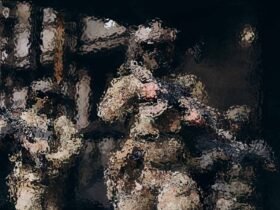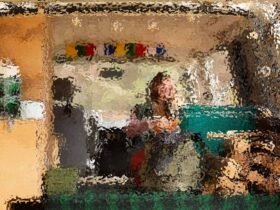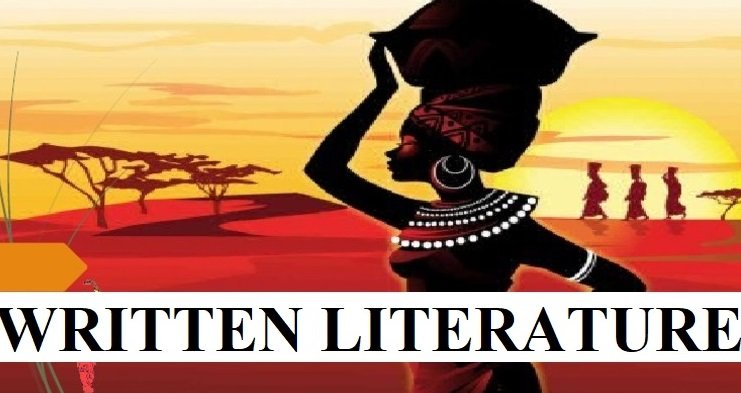History of Tanzania to the Recent Past
THE NGONI INVASION AND ITS IMPACT
INTRODUCTION
In this lecture, we shall trace the migration of Ngoni groups from their original homeland in northern Natal, in what is now the Republic of South Africa, to Ufipa and Songea in Southern Tanzania. After that we shall discuss their expansion in Tanzania and neighbouring areas and their impact on Tanzanian societies.
OBJECTIVES
At the end of this lecture, you should be able to:-
– Tell who the Ngoni were and what their culture background was;
– Explain the Ngoni expansion and settlement in western and southern Tanzania
– Assess the Ngoini impact in western and southern Tanzania in the 19th century.
The Ngoni were Bantu-Nguni speaking people of Northern Zululand in South East Africa. They were originally Ndwandwe people under Zwides leadership. But when Shaka defeated Zwide, one part of his group, the Ngoni moved to East Africa under Zwangendaba.
In origin, the Ngoni, were close relatives of the Zulu. They were full- time warriors and cattle plunderers hence disliked by other tribes, so they forced them away. They were pushed further north and eventually reached southern Tanzania.
They were forced out of South Africa by the “Mfecane” wars led by Shaka the Zulu. They came to be known as the Ngoni having absorbed the Thonga, Shona and Cewa on their way to East Africa.
The Ngoni migration began among the Bantu peoples of South Africa, who entered into E. Africa in the 1840’s. They were the last Bantu migrants to come to East Africa. They migrated into two largest groups of the Maseko and Tuta Ngoni.
The Ngoni broke the Monomotapa Kingdom, settling respectively on the eastern side of Lake Nyasa (Malawi) at Songea, and on Ufipa plateau.
They moved to Tanzania from Natal and Swaziland between 1820 and 1840 due to the Mfecane (time of trouble). They are direct descendants of the Zulu. They are currently settled in South West Tanzania around Songea town.
The Ngoni invasion illustrates the influence of external forces on the lives of the indigenous people. The Ngoni brought innovation and changes such as military techniques, skill and weapons. A study of the Ngoni would enable students appreciate the current settlement patterns and way of the life of the people of Southern Tanzania
Reasons for the Ngoni migration
It was due to fear of being absorbed into the empire of tyrant Shaka.
The Ngoni migrated due to the tyrannical and dictatorial rule of Shaka, the Zulu ruler who was everything in his kingdom. His cruelty was shown when he lost his mother, and put people under severe signs of mourning. Those who refused to cry for his mother’s death were killed,so they decided to seek refuge by migrating to other areas.
They moved because of external pressure from the British and the Boers in the South who were moving northwards occupying their land.
It was due to over population, which was caused by the fertility of soils and reliability of rainfall between Drakensberg Mountains and the Indian Ocean.
Due to overpopulation there was land shortage hence land disputes, which led to forcing them to migrate to other areas.
Some owned large herds of cattle hence moved northwards looking for pasture and water for their animals. So, they wanted to look for more fertile land for grazing their cattle.
It was also due to epidemic diseases such as smallpox and sleeping sickness that affected them.
They could have moved because of famine and drought that led to lack of food and water.
It was because of influence of men like Zwangendaba, Maputo and Zulugama who provided good leadership. This encouraged them to move on wards.
They migrated because of the spirit for Adventure.(Need to see what was beyond them).
The leaders wanted to take over power in the areas they defeated, which was not acceptable to Shaka forcing some groups to migrate to other areas.
They were fed up with the old traditional political system, which encouraged dictatorship and therefore wanted change, which could be achieved through migration.
It could also have been due to overstocking of their animals. They migrated due to their spirit of cattle rustling, i.e they had great desire to steal other people’s cattle. For example, they went on driving away and confiscating other people’s cattle during their conquest and expansionist wars.
They migrated due to the increased knowledge of military tactics by the age regiments. These were powerful military forces and dedicated to professional war, which was their livelihood. They believed that they could other territories through migration.
NGONI MIGRATION AND SETTLEMENT
They began their movement from South – East Africa in Northern Zululand under the leadership of Zwangendaba in 1820.
The Ngoni migration took place in the 19th century, and was the last major movement of Bantu people into East Africa.
There were 3 groups of the Ngoni in East Africa i.e. the Ngoni Tuta, the Ngoni Gwangara and the Ngoni Maseko.
They then crossed River Zambezi and River Limpopo and moved northwards in search of new areas.
Later in 1835, they divided into two groups. One group under the leadership of Zwangendaba passed west of Lake Malawi and settled at UFIPA in 1840. They were attracted to this area here because of the many herds of cattle around.
Zwagendaba led the biggest Ngoni group that entered East Africa. They crossed the Zambezi River, moved through Malawi and Zambia until they reached the Fipa plateau in around 1840’s. Zwagendaba died here in about 1845, and his followers splint up into five sections. Three sections returned south to Zambia and Malawi, while the other two, i.e , the Tuta and Gwangara sections remained at Ufipa.
Another group under the leadership of Induna Maputo (Maseko Ngoni) passed East of Lake Malawi and settled at Songea. When Zwangendaba died around 1845, the Ufipa ngoni disagreed and plit in to five groups.
Two groups remained in East Africa,i.e Tuta and Gwangara Ngoni
Three groups moved out of East Africa that is to say, one group moved to Malawi and the two moved back to Zambia.
The Tuta Ngoni, the smallest group left Ufipa, moved northwards fighting and clashing with the Holoholo near Lake Tanganyika. They disrupted the trade route between Tabora and Ujiji.In the 1850s they invaded the Nyamwezi capturing many and incorporating them in their ranks. They finally settled at Kahama South of Lake Victoria.
The Gwangara Ngoni under the leadership of Zulugama moved eastwards to
Songea where they met the Maseko Ngoni. The two groups fought and the
Maseko Ngoni were defeated and pushed out of Songea in 1860s.
Some of the Maseko moved back to Mozambique while others moved to Kilombero valley where they became known as the Mbunga.
Another splinter group moved to Newala, Masasi and Tunduru.
From Songea the Ngoni raided widely, finally settling in Southern Tanzania among the Bena, Hehe and Sangu. The Ngoni migration, which started around 1820’s, had ended by the year 1860s.
The Ngoni Migration
In twenty years they travelled over a thousand miles.
In 1818 the Nguni started to fight among themselves for land and power. Different people wanted to be in charge. It led to the Zulu Wars. They fought each other for power. The ones that lost the the battles were forced to leave the Zulu lands. This was the start of a long migration to find somewhere else to live.
Zwangendaba was one of the defeated leaders. He fled north after his defeat in 1819. Zwangendaba’s followers started to use the name Ngoni. Over the next 20 years they had to find ways to survive. How could they get food to eat? One way was to steal food and cattle from villages they came across. They killed people who tried to stop them. As you can imagine, they were disliked by the tribes they stole from. None of the other tribes wanted the Ngoni to live near them, so they forced them away. Each time the Ngoni were pushed further and further north. Until, eventually, they reached Southern Tanzania.
Not much was written about the Mfecane. What we know is from the diaries of missionaries and travellers from Europe, and from the stories passed down from generation to generation.
Shaka and the Zulu Wars
It all started with troubles in South Africa. They began at the start of the 19th century, around 1800. At this time the Zulu kingdom was led by a powerful warrior called Shaka (or Tchaka). The Zulus became rich and defeated many other tribes.
Zwangendaba
Ngoni Fighting Methods
As they moved north they came into conflict. They fought the other groups who were living on the lands they crossed. Because they knew Zulu fighting methods the Ngoni could usually defeat groups that opposed them. The Zulu warriors were well trained. They planned how they were going to fight their battles. Their trick was to try and surround their enemy. They went forward to battle in a horn formation and closed around their enemy. They used assegais, which were short stabbing spears and they were trained in man-to-man fighting. Most other tribes used throwing spears. Often the Ngoni would make a mock charge, get their opponents to throw their spears and then stab them with their assegais. After the battles they would force the young men to join their army and take young girls for wives. Other people, including the old people, were often killed.
The Ngoni specialized in fighting. That was all they knew. They could not produce their own food. They had to keep moving to find new villages they could plunder. The king of the Fipa people, who lived in that area, made peace with the Ngoni. This saved his kingdom from being destroyed. Zwangendaba built his own capital called Mapupo, which means “dreams”. For two more years they raided neighbouring people, the Sukuma and Msafwa, to get food and cattle. Then they settled down with their animals and families, and started to grow crops.
Breakup of the Ngoni
Zwangendaba died in Mapupo in 1845. He was buried in an ox hide at Chapota, near the Nyinaluzi River. He fled from the Zulu Wars in South Africa. But he spent the rest of his life fighting other tribes for survival. He was a great warrior and leader.
After Zwangendaba’s death his family fought over who should succeed him. His group divided in two. Then each of these groups split up. In the end there were 5 separate groups. Three went back to cattle raiding, in Malawi and Zambia. Two groups went north as far as Lake Victoria. There they found Arabs who were taking local people as slaves.
Effects of the Ngoni migration and the Mkecane
The Ngoni migration and mfecane caused trouble for 20 years, in central and east Africa. Thousands of people were killed by the Ngoni. Villages were destroyed and people were forced offtheir land. Many of them starved due to the lack of food.
The main problem was that the Ngoni knew only one way of life and that was fighting. The only way they could feed themselves was to plunder and kill. They even sold many of the people they captured to slave traders. This caused more misery throughout Tanzania.
Eventually the groups the Ngoni fought banded together for protection. One of the Sangu chieftains, Mwakawangu, united the people to defeat the Ngoni invaders. This gave the Sangu control of the rich, farming area of the Southern Highlands. Other groups also realised that they had to be strong to protect their livelihoods.
The Zulu
The Zulu peoples were an important tribe in South Africa in the late 18th century (around 1790). They lived around the areas called Natal today. There were many small groups of Nguni, which was the old name for the Zulu. The groups lived separately and were not organised under one leader.
The Zulu were cattle herders but they also grew some crops. They came into contact with Portuguese farmers living in Mozambique. The Portuguese grew maize, which they brought to Africa from the Americas. Maize was a good crop to grow, because it produced more food from the same area of land. The Zulu also started to grow maize. This gave them more food and allowed Zululand to support more people. The Zulu became better fed and stronger and their population increased greatly.
Shaka Zulu
Shaka Zulu was the leader of one of the smaller Zulu chiefdoms. Because there was plenty of food he was able to have an army. The food for the warriors was provided by others. This allowed them to be a full-time army. They developed better weapons. One of these was the assegai, a short stabbing spear. The assegai was feared by enemies. Using his well-trained warriors Shaka took over neighbouring lands.
The Tribute System
He forces other tribes to pay him tributes in exchange for protection. The tributes were gifts. They included cattle, furs, feathers, and carved wooden sculptures. He took control of all the precious metals. At this time they were copper and brass. The metal was used to make wooden clubs stronger. It was also used for ornaments, like neck rings and armbands. The more of these you had, the greater your importance in the tribe.
Drought and Crop Failure
The problems for the Zulu started after 1800. By then most of the good land was being used. As the population grew, the extra people had to fight for land in order to survive. Things were made worse by 10 years with much less rain. The period of drought meant that crops failed. This led to food shortages.
The Zulu started to fight among themselves for land and water. This led to the Zulu Wars from about 1815 to 1820. Many people were killed and many others were forced off the land. The survivors had to move out of Zululand.
The Mfecane
This led to the great migration called the “Mfecane”, which meant the “great scattering” . The Mfecane lasted from 1815 to 1840. The people could not move south, because the Dutch settlers had lived there since the 17th century. They could not move east because Portuguese farmers were there and there were also slave traders. So they moved north toward East Africa.
Zangendaba led the Ngoni group that made their way north as far as Southern Tanzania. This was what we now call the Ngoni migration.
The Ngoni Migration
Do this when you have studied the whole topic of the Ngoni migration.
Make a list of the reasons why the Ngoni migrated from South Africa to Southern Tanzania.
What were the things that caused them to leave South Africa.
Why were they happy to settle in Southern Tanzania 20 years later?
The Ngoni and the Zulu
(1) Where the Ngoni live
The Wangoni are Bantu people. They live in south-west Tanzania.
They live in over 100 villages around the town of Songea.
(2) Their Zulu origins
The Wangoni have a strong story-telling tradition. Their elders tell stories about the tribe to the younger generation.
They are called “Hearing Tales”. They are repeated often so the young can learn the stories. They then pass them on to their children.
This is how the history of the tribe is passed on from one generation to the next.
According to these “Hearing Tales” the Ngoni believe that the tribe is related to the Zulu.
Their stories tell of how they migrated to Tanzania from South Africa, from the area between Natal and Swaziland.
There are 12 branches of the Ngoni tribe. Other groups are in Northern Malawi, Eastern Zambia, Southern Zimbabwe and Mozambique.
(3) How the Ngoni are like the Zulu
The Ngoni in Southern Tanzania have a lot in common with other Ngoni groups and with the Zulu of South Africa.
1. Settlements. Their villages have a similar design.
Ngoni villages are built around the cattle enclosure. This is called a kraal. It is made from thorn bushes, to keep out wild animals. Cattle are the Ngoni’s wealth. When they eat cow’s meat they believe they are sharing with their dead ancestors.
The important buildings in a Ngoni village are the houses of the clan head, his chief wife and the hut for the boys. In the boys’ hut they are trained in the Ngoni traditions. They also learn to hunt.
There is a separate area where the men of the village talk. The huts of other people are spread around the kraal. You can see from this that protecting the cattle is very important to the Ngoni. They also have some fields where they grow food crops. This settlement pattern is found in all the Ngoni groups as well as in traditional Zulu society. Below is a picture of the Ngoni men sitting inside the kraal.
2. Customs and rituals. As well as having similar settlements the Ngoni and the Zulu had similar customs and rituals.
a. Girls had initiation ceremonies where they are given sex education, taught family planning and house management.
b. Boys had similar circumcision ceremonies and they were taught to hunt, other skills, tribal beliefs and some were taught witchcraft.
c. Both boys and girls were taught the arts of painting, modeling and crafts.
d. The groups had similar traditional dances, which date back to their warrior past.
3. Language. They share many common words in their languages.
(But the languages of each group have merged with the languages of the people they live near, so they cannot any longer speak to each other in a common Ngoni language.)
4. Ngoni and Nguni. The Zulu belong to a group of tribes that are called the “Nguni” in South Africa. This is a very similar name to Ngoni, and another reason why many Ngoni believe they are related to the Zulu.
Please Note: The way of life of the Ngoni in East Africa and the Zulu of South Africa are similar. They could be related to the Zulu. On the other hand, they may have just picked up their customs after being conquered by the Zulu.
MAP SHOWING NGONI MOVEMENTS
WHY WERE THE NGONI SUCCESSFUL DEFEATING / CONQUERING THE IN PEOPLE OF TANZANIA (SOUTHERN PART).
The Ngoni came in big numbers and were strong. On their way they absorbed or fought off the people they encountered, capturing young men for warriors and young women for wives.
They had good military organization with age-regiments called “impis”. (Strong army)
The Ngoni had a large, well-trained and disciplined army. They were grouped in age-regiments which were maintained for long periods. The Ngoni did not cultivate but rather lived by plundering from others. This enabled them to have a standing army always ready for battle.
They had superior weapons such as the short stabbing spear (Assegai) and big cowhide shields, which only left a soldier’s face exposed to the enemy, protected the warriors. Instead of the long-throwing spears which had to be thrown one by one, the Ngoni adopted short-stabbing spears and clubs known as Assegai, copied from Shaka the Zulu.
On the other hand their enemies used long –throwing spear. They used these for close hand to hand combat, and the warriors could be protected by large cow-hide shields which left only a warrior’s face exposed to the enemy.
They had superior military tactics such as the cow horn method (semi-circle), which was unfamiliar in E. Africa. They fought in organized age-regiments and could attack their enemies using the cow-horn formation. They also chose clear open spaces for fighting and liked attacking their enemies by night.
They met small and fragmented societies, which were unable to challenge their military organization. Slave trade had undermined most of the communities of Southern Tanzania.
The Ngoni were successful due to their determination. They were determined to conquer and obtain places for settlement. This was due to the fact that they were already being chased away from their homeland, and their only alternative was to get determined and fight any people they came across.
The East African people were caught unaware and therefore did not offer much résistance. The Ngoni were successful because the local people whom they were fighting with were so weak and lived in small groups, which could not resist/challenge the sudden and unexpected Ngoni invasions.
Disunity among the East African people living in isolated societies, made it easy for the Ngoni to defeat them. The inhabitants were living in isolated societies which made it easy for the Ngoni to defeat them.
The Ngoni were fully united under their commanders. They were successful because of their unity and solidarity. They mixed freely with the non-Ngoni speaking people.
They had strong military leaders e.g. Zwangendaba, Induna and Maputo who were able to unite and command the Ngoni.
Applied the scorched earth policy hence taking people unaware. They burnt and destroyed crops.
They used assimilation policy, i.e. they absorbed the people they defeated. They would force the captured men from other tribes to join them and become Ngoni warriors.
They also made themselves fearful to their enemies by wearing the skeletons of their victims.
EFFECTS OF NGONI INVASIONS IN TANZANIA
The Ngoni invasion led to the rise of outstanding leaders to prominence. These included Mirambo, Nyungu ya Mawe and Mkwawa, who used the Ngoni military tactics to build their states.
Many small Ntemi chiefdoms came together (united) and formed larger political units under strong leaders to fight the Ngoni e.g. Sangu and Hehe. (re-organization)
There was formation of new societies (tribes) like the Mbunga.
The Hehe under Mkwawa were able to resist the Germans.
There was spread of Ngoni customs and culture. e.g. Initiation ceremonies where girls were taught sex education and circumcision.
It led to formation of a larger Ngoni society in E.Africa as they absorbed many people.
It led to formation of some societies by those who used Ngoni tactics e.g. Nyamwezi under Mirambo.
It led to introduction of new weapons e.g. Assegai, cowhides and shields.
From the Ngoni invasion, people learnt how to get organized from smaller disorganized societies, to well organized bigger political systems. These were to be under the control and leadership of organized, strong and efficient rulers such as the Sangu chief, the Hehe, e.t.c.
There were intermarriages between the Ngoni and Nyamwezi,which subsequently led to improved relationships between the invaders and indigenous peoples, and an increase in population.
They caused wide spread loss of lives leading to depopulation in some areas where they got warriors this was especially in southern Tanzania. This was due to the killing of people in the expansionist wars, e.g., the Mariti remnants of Rugarugas killed so many people.
They introduced military organization and tactics to such an extent that the Ngoni lost their superiority e.g. Holoholo were able to defeat the Tuta Ngoni when they re- attacked them.
Their movement led to widespread devastation, depopulation and displacement of people.
They destroyed the economy of the people of southern Tanzania when they grabbed their cattle. (The Ngoni were cattle plunderers). The Ngoni invasion led to poverty, i.e., it led to the creation of a class of poor people as their property continued to be destroyed and persistently looted during the wars.
The Ngoni led to formation of refugees who lived by plundering and killing i.e. the Mariti and Rugaruga who were later used by ambitious men like Mirambo, Nyunguyamawe to make their empires.
The Tuta Ngoni, on their movement northwards, disrupted the trade particularly between Tabora and Ujiji.
There was loss of peoples’ language, culture and customs (Detribalization of people). i.e., the raids caused many people to become homeless and tribe less. This led to people losing their identity. In addition, such groups became terrorists who lived by war, plunder, and hunting for ivory. They included the “Ruga-ruga” who began hiring their services as mercenaries to any chief willing to pay them.
Ngoni disturbance disrupted normal cultivation leading to famine. There was widespread famine due to the scotched-earth policy of fighting. This included destroying crops and houses by burning. Under such circumstances, crops could neither be planted nor harvested, and people were forced to abandon farming.
They led to insecurity since the new weapons and military tactics increased warfare and aggression in East Africa.
The Ngoni intensified slave trade in East Africa, this was because they displaced people from their homes and so making it easy for slave raiders to get them and sell them.
It led to increased war-fare among the African societies, including those areas that had been peaceful before.
Conclusion:
At the end of the 19th century, Germany colonised Tanganyika. The Ngoni were one of the groups that fought hard against the Germans. But in 1907 all the Ngoni chiefs were hanged for fighting. Today the Ngoni have married into the tribes they conquered. It is now difficult to know who Ngoni is and who is not. But their traditions and way of life continue.
SUMMARY
In this lecture, we have shown who the Ngoni were and how they came to Southern Tanzania in the early 1840s as refugees fleeing from Shaka’s conquest in northern Natal. We have also shown how their expansion shattered many communities in southern and western Tanzania.
Ethnic groups which failed to imitate their organization and military methods were destroyed and their remnants turned into brigands who terrorized southern and western Tanzania looking for cattle and captives for sale to coastal slave traders. Others created large states such as the Sangu, Hehe, Mbunga, Kimbu under Nyungu-ya-Mawe and Nyamwezi under Mirambo.
ACTIVITIES
- Explain who the Ngoni were.
- Explain why the Ngoni of Zwangendaba did not settle in the southern Mozambique or Zimbia LECTURE 6 THE GREAT TRADING EMPIRES OF PRE-COLONIAL TANZANIA
INTRODUCTION
In this lecture we will examine different empires that were found in pre colonial Tanzania and their contacts between them and different initiative undertaken.
OBJECTIVES
At the end this lecture, you should be able:-
-identify different great trading empires of pre colonial Tanzania
-explain the role of different communities in long distance trade during pre colonial Tanzania
CENTRAL TANZANIA
Nyamwezi by about 1825, a long this tribal trade route became the trading empire during pre colonial era in Tanzania, since a long this route ivory appears to have attraction and slaves among the traders who crossed Tabora, for instance Said bin Sultan himself, after the transfer of his capital from Muscat to Zanzibar, gave encouragement to the Arabs to pursue these trading possibilities from Nyamwezi empire, the Arabs pressed on to Lake Tanganyika in the early 1840s.
Tabora and Ujiji on Lake Tanganyika, became important trading centres, and number of Arabs make their there. Mirambo, an African chief who built for himself a temporary empire to the west of Tabora in the 1860s and 1870s effectively blocked the Arabs trade routes when they refused to pay him tribute. His empire was purely personal achievement of intergrating Rugaruga in his army which in turn strengthened the Nyamwezi trading empire during pre colonial era. However the trading empire collapsed after the death of Mirambo.
SOUTHERN INTERIOR
Fipa, Nyiha, Kinga and Yao traded iron goods in many parts of Southern highlands, Western Tanzania, northestern Zambia and northwestern Malawi. They also well known for their cotton-cloth and their smoked fish. Nyiha and Kinga, like the Fipa supplied their iron goods to people in the highlands, while the Yao supplied theirs to the people living south east of the highlands.
The Nyiha and their western neighbours, the Nyamwanga, were also famous tobacco and cotton-cloth producers since they exchanged thee products with all their neighbours for other things. Bena also produced amount of salt at Saja. This salt was exchanged for grain, livestock and other goods in Uhehe, Usangu, Ukinga and Unyakusa. Areas lying to the southeast of the highlands such as Undendeuli, Umatengo, Umakua and Ugindo received some of the salt they needed from the Swahili coast. It was supplied to them by the Yao, who had started trading with the coast since the 17th century. The trade conducted in this region led to the formation of strong trading empire under Mkwawa of Hehe who later on opposed colonial intrusion at the end of second half of 19th century.
SWAHILI COAST
Swahili towns were initially small farming and fishing communities. They produced sorghum, millet, rice, coconuts, fish, iron implements, salt and various fruits and vegetables for consumption and exchange. They exchanged surpluses of their ordinary consumer goods and essential commodities such iron and salt among themselves and neighbouring communities in the hinterland from whom they got ivory, rhino-horns and other things. They also traded with foreign traders who occasionally visited the coast.
The trade with Southern Arabia, Oman, Persia and India grew and expanded from about the eleventh century, settlements and villages united to form town such as Mtang’ata, Utondwe, Kaole, Kunduchi, Kisiju and Kilwa Kisiwani. When that happened, greater wealth was concentrated and accumulated in the hands of a few leading families known as Waungwana or mamwinyi. These waungwana and mamwinyi became very influential and powerful in different towns because of their wealth, family traditions and control of religious affairs.
The main basis of their wealth was land ownership and control over labour and trade. Before the Portuguese conquest of the coast at the beginning of 16th century, only Kilwa was able to get goods from the southern part of the Tanzania interior as well as Mozambique, Malawi and Zimbabwe. The rest got their goods from the nearby hinterlands. The trade and economic prosperity of all coastal towns, including Kilwa declined drastically during the period of Portuguese occupation in 16th century even though it was restored after the Portuguese expulsion at the end of 17th century.
In this lecture, we have discussed the Great Trading Empires of Pre-colonial Tanzania, and we have examined different trading empires that were found in pre colonial Tanzania, such as Central Tanzania (Nyamwezi), Southern part (Nyiha, Fipa, Kinga and Yao) and Swahili Coast and their trade contacts between them and different initiative undertaken during Pre-colonial era.
ACTIVITIVIES
Discuss the roles of Nyamwezi and Yao in long distance trade during pre-colonial Tanzania.
Explain why Portuguese conquest caused decline of coastal towns, including Kilwa during 16th century
EUROPEAN ACTIVITY IN TANZANIA TO 1890
INTRODUCTION
In this lecture we shall trace the expansion of European activity. In this lecture, we shall trace the development of European interest in Tanzania and how increased European activity affected different parts of the country in the 18th century.
OBJECTIVE
At the end of this lecture, you should be able to:
-Explain why European interest in Tanzania increased steadily from about the 1820s;
-identify the different groups of Europeans and their activities in Tanzania up to the eve of European colonial rule in Tanzania
-describe the result of European activity in Tanzania
-assess the importance of European activity in Tanzania.
The earliest Europeans to visit the Tanzania coast and the Greeks who came as sailors and traders at the beginning of the Christian period. The early European visitors seem to have made very little impact in the region because they were simply coming to sell and buy goods and not to settle or colonize. Modern European interest in Tanzania and other parts of East Africa dates back to the discovery of the Cape sea-route to the sources of spices in India and other parts of Southeast Asia in 1498. Shortly after this discovery of the cape sea-route to Southeast Asia, the Portuguese seized the whole East Africa coast and controlled it politically and economically until their expulsion by the Arabs of Oman at the end of 17th century. The Portuguese were soon followed by other by other European nations, namely the English, French and Dutch, who also came to trade in the Indian Ocean region. All these European nations were enabled by the rise of merchant capitalism to expand overseas.
EUROPEAN ACTIVITY IN THE 19TH CENTURY
Increased European activity in Tanzania started when the French from their base in the island of Mauritius and Reunion made proposal to annex the whole East African coast in the 1970s. They did not, however, carry out this plan for different reasons. Instead, they started buying slaves at Kilwa and Zanzibar in the 1770s for export to West Indies and their sugar-cane and coffee plantation in Mauritius and Reunion.
Direct European involvement in Tanzania and other East African countries was a result of social, economic and political changes which occurred in Europe since the 18th century. These changes were caused by the Industrial revolution. Industrial revolution refers to the rapid changes in the tools and methods of production of goods which were brought about by mechanical inventions. These changes also made it possible for these groups of Europeans (traders, missionaries and travelers or explorers) to carry out their activities outside Europe.
European Traders
Traders were the first group of European to become interested and directly involved in East Africa as we have pointed out. After the Portuguese and the French, it was British traders who became involved in the East African coast.
Early in the 1830s, British company known as Newman Hunt and Christopher started trading directly with Zanzibar and established a depot there. At this point the competition between British traders and those of other nations increased very much. The Americans, for example, who had started trading with Zanzibar in the mid-1820s, overshadowed the British and the French commercially by the 1830s.
The British government signed a series of treaties with Sultan Seyyid Said and his successors between 1822 and 1876. By the 1860s, when British ships were patrolling the sea along the East African coast to prevent slaves from being exported from the region had risen to about 20,000 a year according to the estimates of some historians. Even after 1873, when all shipment of slaves by sea was made illegal, slave raiding and trading within the region is said to have reached new high levels. Apparently the slave trade was so important to the Zanzibar economy as a source of labour and revenue that none of the treaties to restrict or abolish it were implemented fully by the Sultan and his government.
European Travellers
Very little was known about Mainland Tanzania and the rest of East Africa interior before it was penetrated by European travelers and missionaries in the second half of the 19th century. Until about 1850, European knowledge of East Africa was still limited to what the reader could obtain from old Roman, Greek, Arab and Portuguese sources and from recent sources such as reports of the British navy, European trade mission based in Zanzibar and the Church Mission Society (C.M.S) station at Rabai, near Mombasa. The first missionaries in East Africa were Germans working for British C.M.S. They were J.L Krapf, J. Rebmann and J. Erhardt who established station at Rabai in 1844. Rebmann travelled to Kilimanjaro region and saw the snow-capped mountain there in 1848.
In 1856, the Royal Geographical Society in London sent Richard Burton and John Speke to find out whether indeed there were snow-capped mountains and big inland lake or lakes in East Africa or not. They were also asked to look for the source of the Nile River in the Lakes of East Africa. When they arrived in East Africa, They stayed in Zanzibar for some time and explored the northern Mrima coast. Having done so they travelled from Bagamoyo to Ujiji via Tabora in 1857 and Seke visited Lake Victoria, near Mwanza, in 1858. Because of their exploration of the northern Mrima coast and their visit to lakes Tanganyika and Victoria, they confirmed that there were snow-capped mountains and at least two big inland lakes in the region. Lake Nyasa was visited by a German traveler named A. Roscher and by David Livingstone in 1859.
Therefore, it can be briefly said that the European travelers or explorers came too Tanzania and other parts of East Africa for different reasons such as:-
-Some came to find out whether the earlier reports about the existence of snow-capped mountains and big inland lake were true or not
-Some came to look for the source of the Nile, which until then was still unknown.
-Some came to study the nature and extent of the slave trade.
-Others came to “open up” the African interior for commerce and
-Others came in search of adventure in unknown lands and what they regarded as “wild tribes”
European Missionaries
The penetration of the interior of the interior of Mainland Tanzania and other parts of East Africa by European travelers between the 1850s and 1880s went hand in hand with the occupation of the region by Christian missionaries. Missionary activity in East Africa started with the establishment of the C.M.S station at Rabai in 1844. Following the C.M.S. example were the Universities Mission to Central Africa (U.M.C.A) and the Holy Ghost Fathers which established in Zanzibar in the early 1860s. The Holy Ghost Fathers established another station at Bagamoyo in 1868. Up to the mid 1870s, these missionary bodies confined their work to converting ex-slaves or freed slaves in Zanzibar and the coast.
Apart from the C.M.S and the White Fathers, other missionary groups which established stations in Mainland Tanzania in the 1870s and 1880s were the London Missionary Society (L.M.S) at Urambo and Ujiji and the U.M.C.A at Magila, near Muheza and at Masasi.
In a nutshell, the missionaries had several aims for coming to Tanzania. These were:-
-To convert people to Christianity
-To replace the slave trade with “legitimate trade” or commerce
-To introduce European culture or civilization.
THE SIGNIFICANCE OF EUROPEAN ACTIVITIES
It is evident, therefore that the partition of East Africa into European colonies between 1885 and 1890 was a logical outcome of the efforts made earlier by traders, explorers and missionaries to “open up” the African continent for commerce, Christianity and European political control. It was a logical outcome because almost all the European travelers and missionaries had expected their efforts to lead to that end. In fact, all the three groups of Europeans who became involved in Tanzania and neghbouring areas in the 19th century were the agents of European colonialism or imperialism whether they knew it or not because their activities and campaigns eventually led to that end.
SUMMARY
In this lecture, we have shown how European traders, traders, travelers and missionaries became involved in different parts of Tanzania in the 19th century. We have also suggested that the European penetration of the Tanzanian interior by travelers and missionaries was actually the beginning of European colonies in the late 1880s. We have finally argued that the traders, travelers and missionaries were agents of European imperialism knowingly or unknowingly.
1. Discuss the factors which drove Europeans to Tanzania and other East African countries in the 19th century.
2. To what extent did European Traders, travelers and missionaries contribute to the colonization of Tanzania in the late 19th century?
Last modified: Monday, 26 December 2016, 7:42 PM

















Leave a Reply